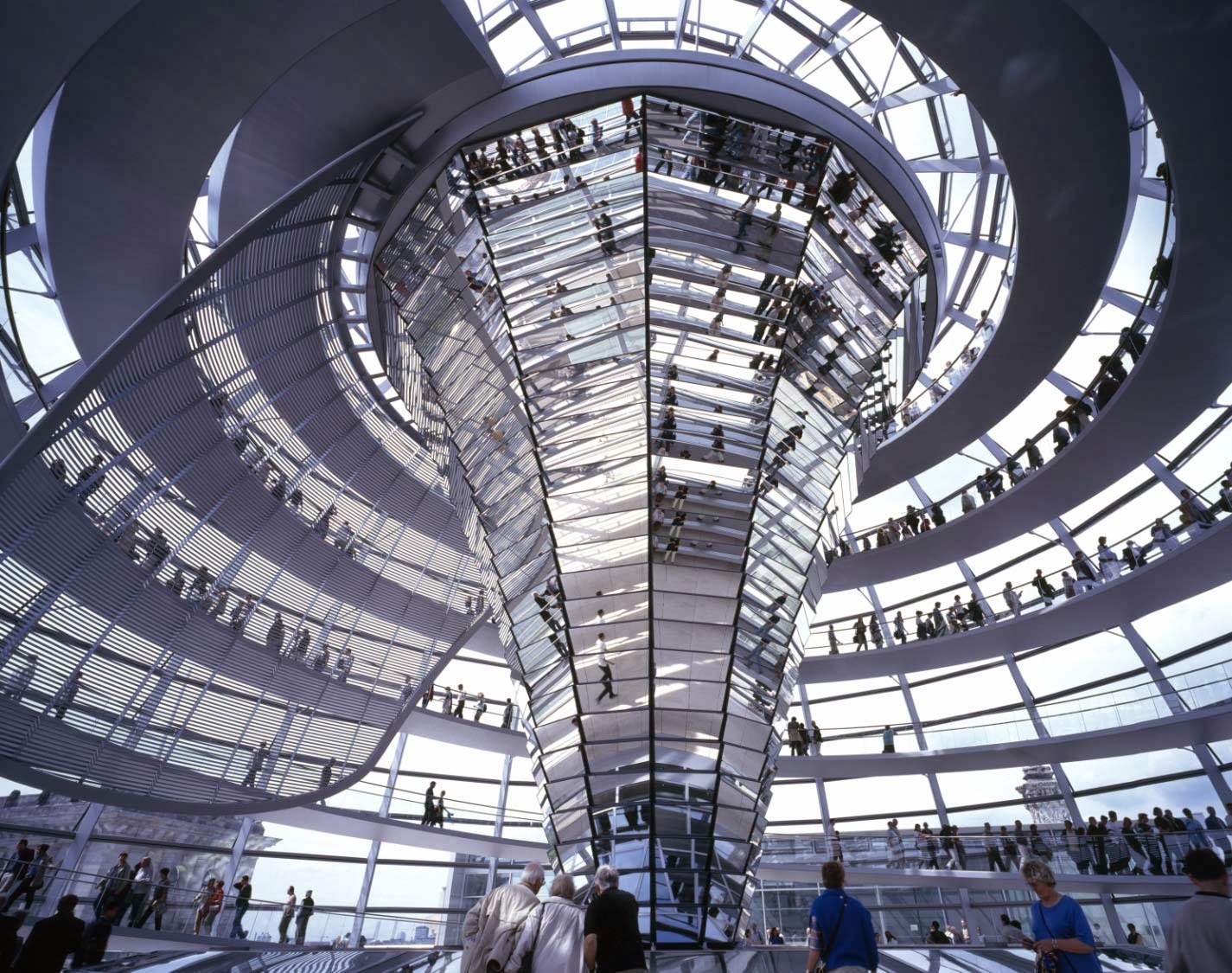 Decorated with a modern interior, yet still retaining the exuberant life of the past, the German Parliament has become the vibrant custodian of the history of the nation.
Decorated with a modern interior, yet still retaining the exuberant life of the past, the German Parliament has become the vibrant custodian of the history of the nation.
It can be said that the restoration of the German Parliament is a model of a new architectural style. Built in the nineteenth century, by the engineer Baun Wallot, this building was renovated ioto a conference center, and from 1990, became the German Parliament.
After much research, it was decided to redo the basic interior of the building into a modern facility. However, it retains vestiges of the past making the National Assembly a live replica of German history. The project was implemented in 1995, the main entrance was opened in the west to serve the public and politicians. The new interior is made of glass, there by displaying all the activities that take place inside.
The 1st floor is a National Assembly meeting room that seats 750 people. The 2nd floor is reserved for Congress and the President of the Council of Ministers. The 3rd floor is the conference room of the party. Above the third floor is a corridor that leads to a restaurant and a glass dome. Two spiral ramps lead visitors up to the dome to the observation floor. Above the dome there is a meeting room for all parties to meet. The dome is 23m high, 70m in diameter. The dome's center is an open cone allowing the light to envelope the building. The cone shaped top is also part of the ventilation system of the German National Assembly room.

The amount of electricity needed to operate the buildings is provided by generators using vegetable oil from palm trees and sunflowers seeds. This use of traditional fuels reduces carbon emissions by 94%.
The German Parliament is consider a model of sustainable architecture, both in the field of using light and natural ventilation as well as the utilization of renewable energy sources, showing clearly the relationship between architectural asethicness and environmental concern.
German Parliament - Museum Of German History.






